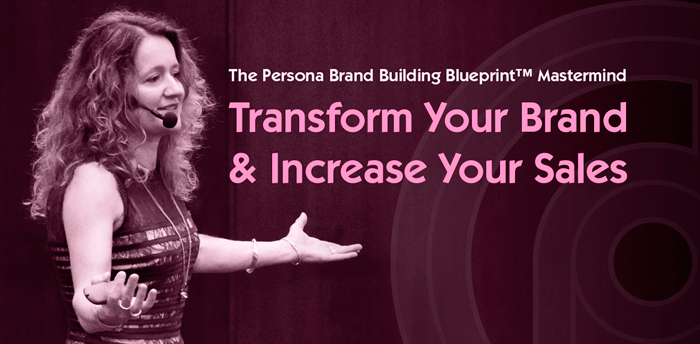Brand Revitalisation: 9 Strategies to Revive Your Lagging Brand
Are your sales are slipping or have you been losing customers to your competition? Or is it a case that your brand simply isn’t performing as well as it did previously?
Regardless of how successful your brand has been or is at present, at some point in its life cycle every brand needs re-evaluation and revitalisation to stay relevant and keep up with changing trends and market demands to ensure its continued healthy growth and profitability.
Rebranding strategy or brand revitalisation can take many forms. A business may choose to make small but significant changes that affect the subtle ways customers perceive their brand, or it may embark on a massive rebranding campaign that transforms every aspect of the brand, giving it a whole new tone and stronger market position.
As with any effective branding strategy, your decision to revitalise your brand should be based on a thorough brand health check or evaluation which includes reviewing what’s going wrong or what should be improved and so forth, to ensure you implement a rebranding strategy that will deliver the required results.
A brand audit, brand health check or brand review typically underpins the first stage of any rebranding strategy and it’s the first stage we engage in when working with any of our clients using our Audit Analysis Accelerator™ system. The insights and outputs from the brand health check are then what help us decide which combination of rebranding strategies are then best suited to our clients needs. The following nine brand revitalisation strategies are examples of some of methodologies we often consider and deploy amongst a full array of different approaches when developing solutions to help re-energise or revitalise our clients brands.
9 Strategies to Revive Your Lagging Brand
Here are nine strategies you can use to revive a lagging brand, to recover and even expand your brand influence, your market share, and your profitability.
1. Become Customer-Centric
Your customers are vital to the success of your brand. If you’re experiencing problems with a flagging brand, one highly effective way to turn things around can be to really focus on them—essentially, to find out what your customers want, and give it to them. Of course, this is not a simple process. But with market research, insights, and thorough planning, you can identify the needs or desires of your target audience, and restructure your brand to deliver.

Image via www.delta.com
As an example, Delta Airlines recently instituted a more customer-centric approach that saved the organisation from near-certain failure. Facing near bankruptcy, the airline turned things around in 2013 by identifying and focusing on the things that mattered to their customers.
Some of the customer-focused changes Delta implemented for their brand revitalisation included:
- Bringing back Red Coats—highly visible, “elite” customer service agents who are empowered to solve passenger issues on the spot, rather than going through management
- Adding WiFi to their flights sooner than their competitors
- Implementing a “flat tire” policy that lets passengers waive change fees and get seats on the next available flight if they’re delayed by unforeseen circumstances
- Improving performance and efficiency to achieve 95% on-time performance with no flight cancellations
The move towards increased customer service saved the company, and restored Delta to one of the top airline brands.
2. Rename Your Brand
For a faltering brand, a name change can have a powerful effect. Renaming your brand can enable you to start with a clean slate, and go a long way towards reversing any negative perceptions that might have been associated with the previous name.
The New Zealand deer industry overcame preconceived notions about their venison products, particularly in the American market, by renaming their offerings “Cervena” as a way to differentiate from other venison brands.

Image via www.cervena.com
Brand name changes can also be effective when the new name is more reflective of your brand platform and values. Recently, New Zealand dairy product company Fonterra launched a rebranding campaign by changing the names of their RD1 stores to the more descriptive and engaging “Farm Source”.

Image via www.fonterra.com
In addition to the name change, Fonterra deployed a farmer-centric marketing strategy that highlights the provenance and roots of their products which creates stronger connections, transparency and authenticity for customers.
3. Streamline and Simplify
As brands grow, they may often experience slowdowns or lagging sales due to the expansion itself. Brand growth can result in sprawling product lines, confusing offerings, and diluted brand cohesion across the organisation. If your brand is suffering from dilution through growth and expansion efforts, a streamlined strategy can help you recover from falling sales and diminished brand recognition.
Technology company IBM successfully used this type of strategy to recover from substantial losses and setbacks due to increasing competition. In 1993, the company experienced a quarterly loss of $8 billion—which represented the largest corporate loss in history at the time. IBM’s successful revitalisation strategy was a return to the basics. The company discontinued business areas that didn’t align with its core competencies and focused on just three areas: hardware, business software, and IT services. Today, IBM remains one of the most successful global technology companies.
4. Reach Out to Your Community
Similar to appealing to customers, becoming a community-oriented brand can help you revitalise your image and revive lagging sales. Focusing your brand strategies on community connection and outreach can help you build a strong and engaging brand image—and in many cases can help you capture word-of-mouth, the most powerful marketing method for any brand.
One successful example of a community-oriented brand is Chipotle Mexican Grill, a restaurant chain based in Denver, Colorado. Chipotle’s actually based their brand strategy on giving back to the community from the beginning. The company spends very little on traditional advertising channels such as TV adverts—in fact, its yearly advertising budget is less than what competitor McDonald’s spends in 48 hours. Instead, the first Chipotle’s restaurant drew in customers by giving away lots of free food, and letting the product speak for itself.
The company has continued this community focus in high-profile ways. During the 1997 trial for a devastating bombing in Oklahoma, the company regularly delivered free food to the courthouse. Chipotle’s also currently sponsors a multitude of local programs and pioneered a campaign called “No Junk” that helps millions of school children eat healthier.
5. Amplify Your Brand Story
In order to have a successful brand, it’s vital to create a meaningful connection with customers. One powerful way to do this is through a compelling brand story, which is a key part of our Personality Profile Performer™ system, and used to created and develop your whole brand profile. You can revitalise a falling brand by refocusing on your unique brand story, and conveying your brand’s origins, values, promise and driving characteristics.
Brand storytelling can be highly effective for all categories and types of business, including premium brands. Recently, Chanel launched a video series that has sparked attention and driven customer engagement on social media to new heights for the brand—based on the powerful story of Chanel’s origins. Part five of the series, which tells the story of founder Coco Chanel, has been especially connective for audiences.
6. Wrap-Up in Something New
Your packaging design is absolutely crucial to effective branding. Research has found that 70 percent of customer purchasing decisions are made at the shelf, and 90 percent of those on-the-spot decisions are made simply by looking at the face of the product in less than 9 seconds. If your brand is struggling, launching a package redesign can help you refresh and restore success.

Image via www.leesfoods.co.uk
A recent package redesign for a UK confectionary company led to incredible results. After creating a clean, simple uncluttered look for their iconic brand, their first image refresh in five years, Lees of Scotland realized a sales increase of 20 percent for its Snowballs and Teacakes treats.
7. Go the Extra Mile
For suffering brands, another powerful revitalisation strategy is to choose an aspect that your brand excels at, and make it even more effective—so that your brand stands out sharply from your competitors. This may be pricing (for discount or premium brands), faster delivery (such as Domino’s Pizza 30-minute delivery guarantee), additional features or innovations, or even exceptional customer service, a quality that online shoe retailer Zappos is well known for.
Enhancing the unique offerings of your brand will help you differentiate, and over-delivering on your brand promise can help to revive a flagging brand.
8. Go Against the Grain
It can be challenging for brands to stand out from a sea of competition. If your brand is struggling to remain solvent, think about how you can make changes that will give you a competitive edge. Often, the most successful brands have distinctive differentiation that make them more innovative, valuable, or desirable than the competition. The bottled water industry, for example, was transformed when companies began adding nutrients, flavours, and carbonation to various brand lines.

Image via www.lush.co.uk
As an example of powerful differentiation, UK cosmetics company Lush has realised phenomenal success and gained a cult brand following by providing organic cosmetics ranges amidst an ocean of competitor brands made with chemicals and formulations. This organic-style branding extends throughout the brand—all of their products are handmade and use minimalist packaging, and Lush retail stores are designed to create an exceptional, luxurious customer experience.

Image via www.lush.co.uk
9. Change your Price Points
Though it may seem counterproductive, you can effectively revitalise your brand by charging more for your products or services. Elevating to a premium brand can bring you greater market share and higher profits—but of course, it’s essential to offer customers something that justifies the higher price point. Rebranding for premium pricing involves an increase in either perceived or actual value for your offerings, and this can be accomplished in many ways.
Some premium rebranding strategies may include:
- Constant innovation, such as Apple and Gilette
- Unique product mixes, such as Whole Foods and Sharper Image
- Selling an experience, such as Nordstrom and Starbucks
- Creating a brand community, such as Red Bull and Harley Davidson
By increasing the perceived value of your products or services, you can turn a slumping or stagnant brand around and find new audiences who are willing to pay premium prices, and will remain loyal to your brand above and beyond your competition.
So, what do you think?
• How could you make your brand more customer-centric? Community-centric?
• Does your brand have a differentiation factor that you could enhance through your brand collateral and marketing campaigns?
• Is your brand packaging inconvenient, outdated, or too similar to the competition? How could your packaging stand out?
• What are some ways your brand could go the extra mile and over-deliver on your brand promise?
• How is your brand story currently incorporated into your customer touch points and overall brand presentation? Is there a way to enhance your brand story?
Feel free to share your thoughts in the comments. We’d love to hear from you!
































